Don't wanna be here? Send us removal request.
Text
What is the difference between IoT and embedded systems?
The rapid advancement of technology has led to a merging of boundaries between different sectors. This convergence is particularly noticeable in the realm of IoT (Internet of Things) embedded systems, where the terms "IoT" and "embedded system" are often used interchangeably. However, it's important to recognize that embedded systems and IoT are distinct concepts, even though they share some similarities.
Embedded systems have been in existence since as early as 1965 when Autonetics, a company, created a small computer for use in a missile guidance system. These embedded systems are essentially standalone devices designed with a specific, dedicated function in mind. On the other hand, an IoT embedded system is an embedded system that possesses the added capability of connecting to the internet, enabling communication with other IoT embedded systems.
In our daily lives, we are surrounded by IoT embedded systems, including devices such as set-top boxes, Point-of-Sale (POS) terminals, various medical devices, "smart" appliances like refrigerators, bicycles, fitness trackers, and even parking meters.
In the following discussion, we will delve into the intricacies of embedded systems designed for IoT devices. We will explore what defines an embedded system for IoT, its capabilities, and practical applications of embedding IoT functionality into these systems.
The key distinction between IoT (Internet of Things) and embedded systems boils down to one crucial factor: connectivity. Even an embedded system, like a pacemaker, can be transformed into an IoT embedded system when it gains the ability to communicate with the external world, such as sending heart-rate data to a central database.
Another distinguishing feature is that IoT encompasses a broader category of devices representing the interconnected world, whereas an embedded system pertains specifically to the hardware within these devices.
The fundamental difference between an embedded operating system and an IoT operating system lies in the necessity for IoT systems to support connectivity. The capability of IoT devices to network and communicate sets apart plain embedded systems from their IoT counterparts.
In every IoT scenario, there's an embedded system at its core, which is why the term "IoT embedded system" is used. Initially, there exists an embedded system, and then additional features are integrated to transform it into an IoT device.
Embedded systems can be remarkably sophisticated, such as robotic systems used in manufacturing or data warehouses. However, their function as pure embedded systems remains limited to their specific purpose until they acquire the ability to communicate and establish connectivity with other IoT embedded systems.
Therefore, the primary distinction between an embedded system and an IoT embedded system hinges on the latter's capacity for communication and connectivity.
0 notes
Text
Has the Internet of Things (IoT) changed our daily lives?
The Internet of Things (IoT) is drastically changing our lives, making everything more connected and accessible. IoT has made its way into everyday items, making them part of an information ecosystem that's reshaping our world.
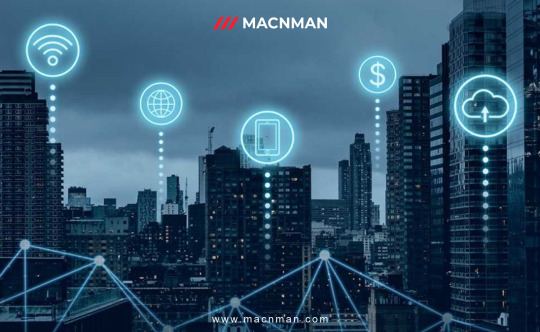
So, how will IoT change the world? IoT has already revolutionized where and how work is done across various industries. It's ushering in the era of the Internet of Everything (IoE), connecting machines, people, processes, and data in ways that profoundly impact our daily lives.
Looking at real-life IoT examples, we see automated temperature control through thermostats, smart devices like Amazon Echo and Google Home, wearables tracking heart rates, home security systems, and voice-activated smart lighting systems.
IoT has a profound influence on our daily routines, transforming various aspects of our lives by harnessing the power of connectivity, data, and intelligent machines.
Smart Home Convenience: IoT has made our homes smarter and more convenient. We can control our thermostats, lights, and appliances remotely using smartphones or voice commands through devices like Amazon Echo and Google Home. Smart locks, cameras, and doorbells provide enhanced security and peace of mind.
Health and Wellness: Wearable IoT devices such as fitness trackers and smartwatches have become commonplace. They help individuals monitor their physical activity, heart rate, sleep patterns, and more. These devices encourage healthier lifestyles and empower people to take charge of their well-being.
Connected Transportation: IoT plays a significant role in transportation through applications like vehicle telematics and navigation systems. Smart cars can communicate with each other and with traffic infrastructure to optimize routes and enhance safety. Ride-sharing apps also rely on IoT for efficient matching and tracking.
Precision Agriculture: In agriculture, IoT sensors and devices monitor soil conditions, crop health, and weather data. Farmers can make data-driven decisions to optimize irrigation, fertilization, and pest control, increasing crop yields while conserving resources.
Healthcare: IoT has transformed healthcare with remote patient monitoring. Devices can track vital signs and transmit data to healthcare providers, allowing for early intervention and reducing the need for frequent hospital visits. IoT-enabled medical equipment also enhances patient care.
Retail and Shopping: IoT has changed the way we shop. Smart shelves and beacons in stores provide personalized offers and product recommendations. E-commerce benefits from IoT through inventory management, tracking deliveries, and optimizing supply chains.
Energy Efficiency: Smart meters and IoT-connected appliances enable homeowners to monitor and reduce energy consumption. This not only lowers utility bills but also contributes to environmental sustainability.
Industrial IoT (IIoT): In the industrial sector, IoT sensors and automation improve production processes, reduce downtime, and enhance overall efficiency. IIoT also enables predictive maintenance, saving both time and resources.
Environmental Monitoring: IoT is used for environmental monitoring and conservation efforts. Sensors collect data on air quality, water quality, and wildlife movement, aiding in environmental research and protection.
Smart Cities: IoT technologies are integral to smart city initiatives. They help manage traffic flow, optimize waste collection, enhance public safety, and provide real-time information to residents and visitors.
Supply Chain Optimization: Businesses use IoT to track goods and shipments throughout the supply chain. This improves inventory management, reduces losses, and ensures products reach consumers more efficiently.

In essence, IoT has become an integral part of modern life, affecting various aspects of our daily routines. Its ability to connect devices, collect data, and enable automation has brought about greater convenience, efficiency, and connectivity in nearly every industry and sector. As IoT continues to evolve, its impact on our lives will likely grow even more significant.
0 notes
Text
What is the difference between the LoRaWAN wireless module and LoRa gateway wireless transmission technology?
Many individuals find it challenging to differentiate between the LoRaWAN wireless module and LoRa gateway wireless transmission technology, as well as their applications within the realm of IoT.
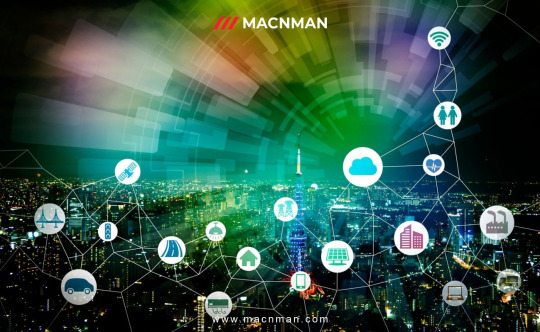
LoRaWAN specifically pertains to the networking protocol found within the MAC (Media Access Control) layer. In contrast, LoRa serves as a protocol within the physical layer. Although current LoRaWAN networking implementations utilize LoRa as the physical layer, it's worth noting that the LoRaWAN protocol also allows for the use of GFSK (Gaussian Frequency-Shift Keying) as the physical layer in specific frequency bands. From a network layering perspective, LoRaWAN can adopt various physical layer protocols, just as LoRa can serve as the physical layer for other networking technologies.
LoRa, as a technology, falls under the category of LPWAN (Low-Power Wide-Area Network) communication technologies. It represents an ultra-long-distance wireless transmission method based on spread spectrum technology, pioneered and promoted by Semtech in the United States. This approach revolutionizes the previous trade-off between transmission distance and power consumption, offering users a straightforward system capable of achieving extended range, prolonged battery life, and increased capacity. Consequently, it expands the capabilities of sensor networks. Currently, LoRa predominantly operates within free frequency bands globally, including 433/868/915MHz, among others.
On the other hand, LoRaWAN wireless communication stands as an open standard defining the communication protocol for LPWAN technology based on LoRa chips. LoRaWAN defines the Media Access Control (MAC) layer at the data link level and is overseen by the LoRa Alliance. It's crucial to distinguish between LoRa and LoRaWAN because companies like Link Labs utilize a proprietary MAC layer in conjunction with LoRa chips to create more advanced hybrid designs, such as Link Labs' Symphony Link.
LoRaWAN typically employs a star or star-to-star topology, which is generally considered superior to mesh networks due to advantages such as conserving battery power and extending communication range. In a star topology, messages are relayed to a central server through gateways, and each end node can transmit data to multiple gateways. These gateways then forward the data to the web server, where tasks like redundancy detection, security checks, and message scheduling are executed.
In summary, LoRa encompasses solely the link layer protocol, making it suitable for point-to-point (P2P) communication between nodes. In contrast, LoRaWAN includes the network layer, allowing data to be sent to any base station connected to a cloud platform. By connecting the appropriate antenna to its socket, the LoRaWAN module can operate at different frequencies, offering versatility in its applications.
0 notes
Text
How do you handle water meter reading using Lora (Raspberry Pi, Arduino, Lorawan, IoT)?
Install a LoRaWAN Gateway: Begin by setting up a LoRaWAN gateway. This gateway acts as a receiver for data transmitted by LoRaWAN devices and forwards it to the network server. It connects to the internet and communicates with LoRaWAN devices within its coverage area.
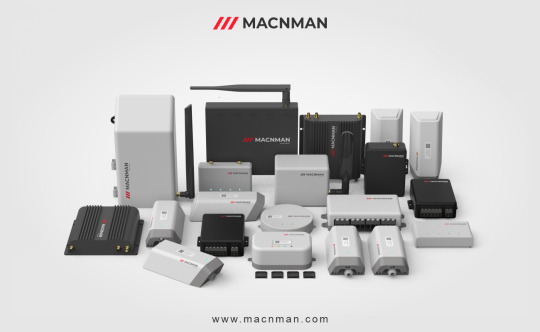
Attach LoRaWAN Modules to Water Meters: Next, equip your water meters with LoRaWAN modules or sensors. These modules are responsible for gathering important data, such as water consumption readings, from the meters.
Develop Firmware/Software: Program your Raspberry Pi or Arduino device to collect data from the water meters through the LoRaWAN modules. This programming may involve utilizing the LoRaWAN library or SDK provided by the module manufacturer.
Set Up a LoRaWAN Network Server: Install and configure a LoRaWAN network server. This server will receive and handle data from the water meters. Its functions include managing device registrations, routing messages, and storing data.
Ensure Secure Data Transmission and Encryption: Utilize LoRaWAN protocols to securely transmit the water meter readings from your Raspberry Pi or Arduino to the network server. LoRaWAN uses AES encryption to safeguard data privacy during transmission.
Data Processing and Storage: Once the network server receives the data, process it as needed. Extract the relevant water consumption readings and conduct any necessary calculations or validations. Store the data in a database or another suitable storage system.
Integration and Visualization: To make sense of the data, integrate it with your chosen IoT platform or application. This integration allows for further analysis and visualization. Consider creating a web-based dashboard or a mobile app to present the water consumption data in a user-friendly and informative manner.
It's important to keep in mind that the specific steps and details of implementation may vary based on the hardware and software components you select and any unique requirements associated with your water meter system. Adapt the above steps as necessary to align with your specific setup and development environment.
0 notes
Text
What is the LoRaWAN? Where is it used, and what is the cost?
Certainly, here's the information presented in different words:
LoRaWAN, which stands for Long Range Wide Area Network, is a wireless communication technology tailor-made for the Internet of Things (IoT). It's renowned for its capacity to transmit data over extensive distances while consuming minimal power, rendering it an excellent fit for diverse IoT applications.
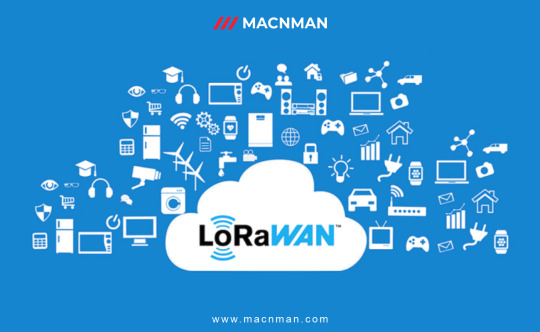
Key points about LoRaWAN:
Technology: LoRaWAN employs LoRa modulation, a technology that enables long-range data transmission. It operates within unlicensed radio frequency bands, often in the sub-GHz range. LoRa's modulation technique ensures excellent signal reach and the ability to penetrate obstacles effectively.
Range: LoRaWAN can achieve impressive communication distances, spanning several kilometers in open environments. This makes it ideal for scenarios where devices must transmit data across substantial distances. However, actual range may fluctuate based on factors like topography and interference.
Power Efficiency: LoRaWAN devices are designed with power efficiency in mind, allowing them to operate on battery power for extended periods—sometimes years—before requiring replacement or recharging.
Network Architecture: LoRaWAN networks typically adopt a star-of-stars topology. IoT devices communicate with gateways, which relay the data to a central network server. This server processes and delivers the data for use in various applications.
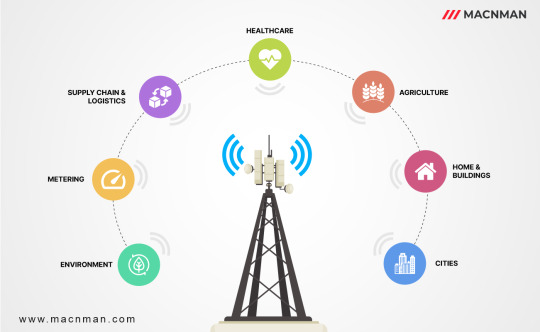
Use Cases: LoRaWAN finds application in numerous IoT scenarios, including smart cities (for tasks like smart metering and waste management), agriculture (for monitoring soil conditions and crop health), industrial IoT (for asset tracking and predictive maintenance), and environmental monitoring (for measuring air quality and pollution levels), among others.
Cost: The cost associated with implementing a LoRaWAN network can vary widely, depending on factors such as the number of devices, required range, and the network infrastructure's complexity. Generally, LoRaWAN is seen as a cost-effective solution because it allows for large-scale IoT network deployments without the need for substantial infrastructure investments. The cost of LoRaWAN devices can also vary but is typically designed to be affordable, particularly for applications requiring numerous sensors.
LoRaWAN's popularity stems from its capacity for long-range communication, energy efficiency, and suitability for a diverse range of IoT applications. Its cost-effectiveness and adaptability make it a practical choice for organizations and industries seeking to implement IoT solutions to monitor and manage various aspects of their operations
0 notes
Text
What is the LoraWAN? Where is it used, and what is the cost?
Certainly, here's the information presented in different words:
LoRaWAN, which stands for Long Range Wide Area Network, is a wireless communication technology tailor-made for the Internet of Things (IoT). It's renowned for its capacity to transmit data over extensive distances while consuming minimal power, rendering it an excellent fit for diverse IoT applications.

Key points about LoRaWAN:
Technology: LoRaWAN employs LoRa modulation, a technology that enables long-range data transmission. It operates within unlicensed radio frequency bands, often in the sub-GHz range. LoRa's modulation technique ensures excellent signal reach and the ability to penetrate obstacles effectively.
Range: LoRaWAN can achieve impressive communication distances, spanning several kilometers in open environments. This makes it ideal for scenarios where devices must transmit data across substantial distances. However, actual range may fluctuate based on factors like topography and interference.
Power Efficiency: LoRaWAN devices are designed with power efficiency in mind, allowing them to operate on battery power for extended periods—sometimes years—before requiring replacement or recharging.
Network Architecture: LoRaWAN networks typically adopt a star-of-stars topology. IoT devices communicate with gateways, which relay the data to a central network server. This server processes and delivers the data for use in various applications.
Use Cases: LoRaWAN finds application in numerous IoT scenarios, including smart cities (for tasks like smart metering and waste management), agriculture (for monitoring soil conditions and crop health), industrial IoT (for asset tracking and predictive maintenance), and environmental monitoring (for measuring air quality and pollution levels), among others.
Cost: The cost associated with implementing a LoRaWAN network can vary widely, depending on factors such as the number of devices, required range, and the network infrastructure's complexity. Generally, LoRaWAN is seen as a cost-effective solution because it allows for large-scale IoT network deployments without the need for substantial infrastructure investments. The cost of LoRaWAN devices can also vary but is typically designed to be affordable, particularly for applications requiring numerous sensors.

LoRaWAN's popularity stems from its capacity for long-range communication, energy efficiency, and suitability for a diverse range of IoT applications. Its cost-effectiveness and adaptability make it a practical choice for organizations and industries seeking to implement IoT solutions to monitor and manage various aspects of their operations.
0 notes
Text
Can LoRaWAN and AI revolutionize the IoT?
The convergence of LoRaWAN and AI has the potential to revolutionize the Internet of Things (IoT) landscape.
LoRaWAN, which stands for Long Range Wide Area Network, is a low-power, long-range wireless communication technology specifically designed for IoT applications. It excels in transmitting data over large distances while consuming minimal power, making it suitable for various IoT use cases.
Artificial Intelligence (AI), on the other hand, encompasses a range of technologies that enable machines to mimic human intelligence and make decisions based on data analysis. When applied to IoT data, AI can unlock valuable insights, automate processes, and improve decision-making.
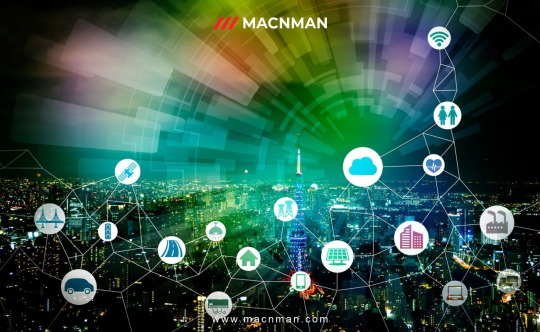
Here's how the combination of LoRaWAN and AI can drive IoT innovation:
Enhanced Data Analytics: LoRaWAN facilitates the collection of data from remote IoT devices, such as sensors in agriculture, industrial equipment, or environmental monitoring. AI algorithms can process this data to uncover patterns, anomalies, and actionable insights that might otherwise go unnoticed. This enables more informed decision-making and predictive maintenance.
Energy Efficiency: LoRaWAN's low power consumption is crucial for battery-operated IoT devices. AI can optimize energy usage by intelligently managing when and how IoT devices transmit data, prolonging their battery life and reducing maintenance costs.
Real-time Monitoring and Alerts: Combining LoRaWAN's long-range connectivity with AI-driven analytics enables real-time monitoring of critical systems. For instance, in smart cities, AI can process data from LoRaWAN-connected sensors to detect and respond to traffic congestion, air quality issues, or security breaches.
Predictive Maintenance: AI can analyze data from LoRaWAN-connected industrial sensors to predict when equipment is likely to fail, allowing for proactive maintenance. This predictive maintenance approach minimizes downtime and reduces operational costs.
Agriculture and Environmental Monitoring: In agriculture, LoRaWAN sensors can collect data on soil conditions, weather, and crop health. AI can then analyze this data to optimize irrigation, pesticide application, and crop yield. Similarly, in environmental monitoring, LoRaWAN sensors can track pollution levels or wildlife movements, with AI identifying trends and potential conservation strategies.
Cost-Effective Scaling: LoRaWAN's scalability and cost-effectiveness make it practical to deploy large-scale IoT networks. AI can manage and analyze the vast amounts of data generated by these networks efficiently, making it feasible to deploy IoT solutions across industries.
In summary, LoRaWAN and AI complement each other in IoT applications. LoRaWAN provides the connectivity and data collection capabilities, while AI adds value by processing and interpreting this data to drive smarter decision-making, optimize processes, and enhance overall efficiency. Together, they have the potential to revolutionize how IoT solutions are deployed and leveraged across various sectors.
0 notes
Text
Which are the most important/common use cases of LoRaWAN?
LoRaWAN® has been employed in various IoT applications spanning multiple industries. In the forthcoming section, we will delve into the foremost real-world applications of LoRaWAN® that are essential for everyone has to be aware of. Even I’m not a professional expert in this field. But have to know some applications and knowledge about it:

Facility Management- Today, property managers and homeowners have the opportunity to enhance the efficiency of their properties while minimizing costs by implementing innovative IoT solutions based on LoRaWAN® technology. This can be achieved with minimal investment in infrastructure and maintenance.
These solutions allow for the control of various aspects, including motion detection, room occupancy monitoring, smart water metering, CO/CO-level monitoring, as well as temperature and humidity monitoring, among others.
Healthcare- The utilization of LoRaWAN®-connected IoT devices in healthcare settings enables the continuous monitoring of high-risk patients and medical systems, ensuring that the health and safety of individuals are never compromised.
This technology enables the reliable monitoring of vital signs in hospital patients, high-performance athletes, senior care recipients, and anyone else in need of real-time health support. This, in turn, greatly enhances the efficiency of doctors and healthcare providers.
Public Safety- In our current era, the importance of public safety and security has reached unprecedented levels. IoT network-based solutions offer first responders valuable tools to mitigate risks and optimize individual safety. This includes wearable IoT devices such as identification badges or systems equipped with panic buttons that can instantly transmit distress signals along with the user's location.
Space Optimization- The pandemic has accelerated the adoption of remote work, leading to extended periods of inactivity in office spaces within corporate buildings and urban areas. Managing and making optimal use of available space has become a logistical challenge for businesses.
LoRaWAN®-enabled IoT devices provide real-time insights into space utilization, allowing people to access workspace conveniently whenever they need it, eliminating the hassle of finding suitable workspaces.
Disaster Preparedness- Devices and gateways equipped with LoRaWAN® networks can continuously collect and transmit real-time data on environmental conditions. This technology can be invaluable in identifying potential concerns before disasters strike, helping protect communities from environmental threats.
Agriculture Advancements- Farmers worldwide are recognizing the importance of gaining insights, analyzing data, and making informed decisions about their livestock, crop yields, and equipment. With the assistance of LoRaWAN®-enabled IoT devices, they can effectively monitor and manage their agricultural operations.
These devices provide data on sunlight exposure, allow precise fertilizer application, and help maintain optimal temperatures for crops, ultimately enhancing agricultural efficiency.
Streamlined Logistics and Transportation- LoRaWAN®-based IoT devices have significantly improved supply chain management. Logistics companies can efficiently track high-value assets, even in transit through remote or challenging geographic areas, thanks to LoRaWAN®'s exceptional long-range capabilities.
Fleet Management Optimization- IoT-powered fleet monitoring solutions utilizing LoRaWAN® offer cost savings by enabling fleets to operate more safely and efficiently, leading to increased fuel efficiency and extended time on the road. Additionally, LoRaWAN® enhances visibility into maintenance needs, further enhancing overall operational efficiency.

Overview of IoT Connectivity with LoRaWAN® connects IoT sensors to the cloud, facilitating real-time data communication and analysis, ultimately boosting productivity and efficiency. These networks are particularly well-suited for wireless sensors due to their ability to transmit data over long distances.
LoRaWAN® sensors feature high-performance link margins, enabling them to transmit signals effectively even in environments with significant radio frequency (RF) noise interference. The impact of LoRaWAN® on the IoT landscape is remarkable, revolutionizing communication capabilities for various applications.
0 notes
Text
How does the LoRa module work?
A LoRa module is a device that enables long-range wireless communication using the LoRa (Long Range) technology. Here's how it works:
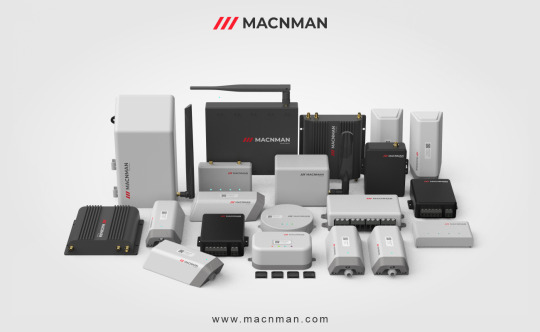
Modulation Technique: LoRa stands for "Long Range," and it's known for its ability to transmit data over long distances while conserving power. The key to LoRa's success is its modulation technique. It uses a method called Chirp Spread Spectrum (CSS), where the data is encoded by varying the frequency of the transmitted signal over time. This allows LoRa devices to achieve both long-range communication and excellent signal penetration through obstacles like buildings.
Transmitter: When you want to send data from a LoRa module, the transmitter encodes the data and converts it into a series of chirps. These chirps are transmitted over a specific frequency band (e.g., 868 MHz, 915 MHz), which can vary depending on the region where the device is operating.
Receiver: On the receiving end, another LoRa module or gateway is tuned to the same frequency band and listens for incoming chirps. The receiver demodulates the chirps to extract the original data.
Data Rate and Range: LoRa technology allows for various data rates, which are chosen based on the communication range and the data's priority. Lower data rates provide longer range but lower data throughput, while higher data rates sacrifice some range for faster communication.
Spread Spectrum: LoRa uses spread spectrum technology, meaning the signal spreads out over a wide frequency band. This spreading of the signal helps make LoRa more resilient to interference and noise, which is crucial for long-range communication.
Low Power: LoRa is designed for low-power, battery-operated devices. The energy-efficient nature of LoRa technology allows these devices to operate for extended periods without frequent battery replacement or recharging.
LoRaWAN Network: In many cases, LoRa modules are used in conjunction with a LoRaWAN network. LoRaWAN is a protocol that defines how data is organized and communicated between devices and gateways. It enables the connection of LoRa devices to the internet, typically using gateways that collect data from multiple devices and forward it to a central server or cloud application.
In summary, LoRa modules operate by using Chirp Spread Spectrum modulation to transmit data over long distances while conserving power. They can be used for a variety of IoT applications, including smart agriculture, industrial monitoring, smart cities, and more, making them a popular choice for long-range, low-power wireless communication.
0 notes
Text
What is the Internet of Things (IoT) development?
Industrial IoT, often abbreviated as IIoT, is all about applying Internet of Things technology in industrial settings, especially when it comes to equipping sensors and devices with cloud-based capabilities. If you want a great example of how this works, take a look at the Titan use case PDF.

In recent times, industries have been making use of machine-to-machine communication, which is commonly known as M2M, to achieve wireless automation and control. However, things have gotten even more exciting with the rise of cloud technology and its companions, like analytics and machine learning. Thanks to these advancements, industries can now add a new layer of automation, leading to the creation of fresh revenue streams and entirely new business models.
Some folks even call this whole concept of the fourth wave of the industrial revolution, or Industry 4.0. It's a game-changer.
Here are some typical ways we put IoT to work:
Smart Manufacturing: Making our factories smarter and more efficient.
Connected Assets and preventive & Predictive Maintenance: Keeping an eye on equipment and predicting when maintenance is needed.
Smart Power Grids: Making our energy systems more intelligent and responsive.
Smart Cities: Creating cities that are more connected and responsive to the needs of their residents.
Connected Logistics: Improving the way we transport goods and track their progress.
Smart Digital Supply Chains: Revolutionizing the way we manage the flow of goods and information throughout the supply chain.
#iot#iotsolutions#iot applications#lorawan#lorawan gateway#lorawan sensors#lorawan devices#lorawan gateway manufacturers#industrial iot#iot connectivity
0 notes
Text
Are all Lora devices compatible with any commercial gateway? Can they be controlled under the same application software/cloud system provided by the gateway maker?
LoRa (Long Range) devices operate on a low-power wide-area network (LPWAN) technology, and they typically use the LoRaWAN protocol for communication. While LoRa devices adhere to a common standard, not all devices are necessarily compatible with any commercial LoRa gateway or a cloud system provided by a specific gateway maker. Here are some important considerations:
LoRaWAN Regional Parameters: LoRaWAN operates on different frequency bands and uses different regional parameters in different parts of the world. For instance, Europe, the United States, and Asia use different frequency bands. Devices and gateways must be compliant with the same regional parameters to work together. Ensure that the devices and gateway you choose are designed for the same region.
Gateway Compatibility: Not all gateways are compatible with every LoRa device. While LoRaWAN uses a standardized protocol, gateway manufacturers may implement the standard in slightly different ways. It's essential to check if your specific device is compatible with the gateway you intend to use.
Frequency Bands: Some devices are designed to operate on specific frequency bands (e.g., 868 MHz, 915 MHz). Make sure that the device and gateway operate on the same frequency band to ensure compatibility.
Data Formats and Application Interfaces: LoRa devices may transmit data in different formats, and the way data is processed and managed can vary. It's important to check if the gateway and the application software can handle the specific data format used by your devices.
Cloud Integration: Gateways often come with their cloud-based management and application software. While some gateways may have APIs that allow integration with third-party cloud platforms or applications, it's not guaranteed. Check if the gateway maker provides APIs or documentation for integration with your preferred cloud system.
In summary, LoRa devices are designed to be compatible with LoRaWAN networks, but the specifics of compatibility can vary depending on factors like region, frequency, and gateway manufacturer. Before purchasing and deploying LoRa devices and gateways, it's crucial to ensure that they are compatible with each other and the cloud system or application software you plan to use. Check with the device and gateway manufacturers for compatibility information, and explore any available documentation and support resources.
0 notes
Text
What is the difference between a gateway and an end device in LoRa technology?
LoRaWAN (Long Range Wide Area Network) nodes and gateways are fundamental components of a LoRaWAN network used for low-power, long-range wireless communication. Here are the main differences between LoRaWAN nodes and gateways:
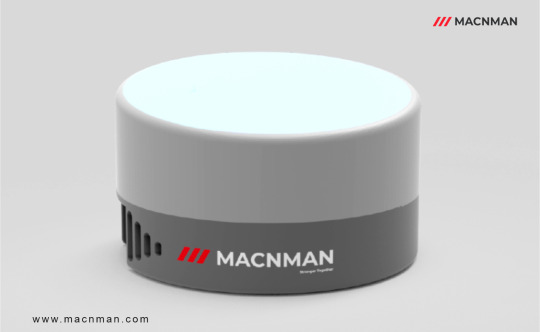
Function:
LoRaWAN Nodes: LoRaWAN nodes, often referred to as end devices or sensors, are the devices that collect and transmit data to the network. They are typically sensors or devices that gather information, such as temperature, humidity, or other environmental data. Nodes are responsible for sensing data, encoding it into LoRaWAN packets, and transmitting those packets to a LoRaWAN gateway.
LoRaWAN Gateways: LoRaWAN gateways, also known as base stations, are the network infrastructure that receives data from LoRaWAN nodes. Gateways serve as the bridge between the nodes and the LoRaWAN network server. They receive data packets from nodes, forward them to the network server, and relay network commands back to the nodes.
Range:
LoRaWAN Nodes: Nodes are typically designed to have lower power transmission capabilities and a shorter communication range. They can transmit data over distances ranging from several kilometers to tens of kilometers, depending on factors like terrain and the presence of obstacles.
LoRaWAN Gateways: Gateways are equipped with more substantial transmission power and larger antennas, enabling them to receive data from nodes over longer distances, often spanning several kilometers to over 10 kilometers.
Power Consumption:
LoRaWAN Nodes: Nodes are designed to be extremely power-efficient, often running on battery power for extended periods, ranging from months to several years, depending on usage and the size of the battery.
LoRaWAN Gateways: Gateways require a continuous power source and are typically connected to a fixed power supply, as they need to operate 24/7 to maintain network coverage.
Location:
LoRaWAN Nodes: Nodes can be deployed in a variety of locations, including remote and hard-to-reach areas, as well as indoors and outdoors. They are often distributed across a wide area.
LoRaWAN Gateways: Gateways are strategically placed in locations with good coverage and connectivity to ensure they can reach a significant number of nodes. They are typically installed in elevated positions, such as rooftops or tall structures.
Network Management:
LoRaWAN Nodes: Nodes are the edge devices that generate data and send it to gateways. They have minimal involvement in network management and primarily focus on data collection and transmission.
LoRaWAN Gateways: Gateways are responsible for managing the network's radio coverage and facilitating communication between nodes and the central LoRaWAN network server. They play a central role in maintaining network connectivity.
In summary, LoRaWAN nodes are the data-gathering devices that transmit information to the network, while LoRaWAN gateways serve as the communication infrastructure that receives data from nodes and connects them to the broader LoRaWAN network. Nodes are low-power, widely distributed devices, whereas gateways are higher-powered, centrally located infrastructure components.
1 note
·
View note
Text
What are some use cases for LORA WiFi in smart homes?
A smart home security system is a component of home automation that seamlessly integrates with an array of smart home devices. Diverging from conventional security equipment, wireless home security system monitoring offers greater user-friendliness and intelligence. It constructs a comprehensive smart security infrastructure that not only safeguards people's everyday lives but also ensures the security of their property and well-being, all while creating a secure and comfortable living environment.
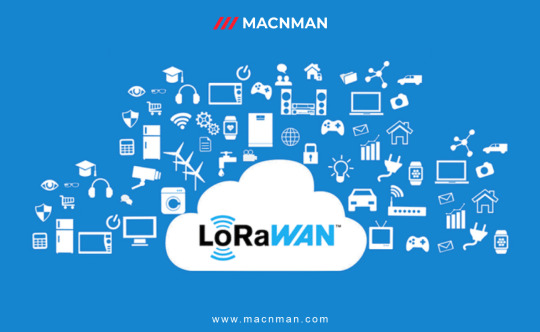
Beyond the commonly recognized smart door locks and surveillance systems, the smart home monitoring system encompasses a wide range of intelligent devices, including the smart gateway, smart plugs, smoke detectors, gas sensors, SOS panic buttons, water leakage sensors, and more. These devices, encircling your home, are interconnected directly or indirectly through the Internet of Things during the home automation process. The capability to remotely and precisely control these devices within the network is a critical aspect.
The Role of LoRa in Smart Home Security
LoRa is the predominant wireless technology within the realm of the Internet of Things. LoRa-enabled smart home security systems facilitate the connection and management of various smart home devices through your smartphone, delivering peace of mind whether you're away or at home. Serving as the central component, with smart fire protection and house alarm systems at its core, it establishes the first line of defense for your family to address comprehensive security requirements in daily life.
LoRa-empowered smart home security solutions are engineered to remotely monitor the home environment and provide users with real-time updates. With its wireless capability, LoRa technology offers strong compatibility and scalability. It allows the incorporation of diverse LoRa sensors to collect environmental data such as smoke levels, temperature, and humidity across different zones within your home. Subsequently, the LoRa gateway transmits this collected data from sensor nodes to a cloud server for processing and analysis. Users receive immediate notifications when an abnormal situation arises.
1 note
·
View note
Text
What are the advantages of the Lorawan solution for industrial buildings?
Building automation plays a pivotal role in contemporary construction and property management. Given the swift progress in technology, there is a growing necessity for building proprietors and administrators to embrace inventive solutions aimed at boosting efficiency, curbing energy usage, and elevating the overall user satisfaction. Among the myriad technologies gaining prominence in the building automation sector, LoRaWAN stands out. In this piece, we will delve into the top ten reasons elucidating why LoRaWAN reigns supreme as the prime selection for building automation.

Extended Communication Range LoRaWAN is tailored for long-distance communication, making it an excellent choice for building automation tasks that involve transmitting data across substantial distances. This technology operates within the sub-gigahertz spectrum, which is less crowded and offers superior coverage compared to conventional Wi-Fi and cellular networks. Consequently, it enables data transmission over distances of up to 15 kilometers in rural areas and up to 5 kilometers in urban settings.
Minimal Power Usage A significant advantage of LoRaWAN is its low power consumption. This technology is designed to cooperate seamlessly with low-power sensors and devices, rendering it a perfect fit for building automation applications demanding extended battery life. This characteristic aids in reducing maintenance expenses and enhancing the overall dependability of the system.
Ample Network Capacity LoRaWAN is engineered to accommodate a substantial number of connected devices, making it a scalable solution for building automation undertakings. Its decentralized network architecture empowers it to manage numerous connections, even in densely populated locales. This makes LoRaWAN an ideal choice for expansive building automation projects.
Cost-Efficiency LoRaWAN represents a cost-effective alternative for building automation, necessitating minimal investment in infrastructure in comparison to other technologies. The decentralized network structure and low power consumption contribute to reduced operational costs, rendering it a more budget-friendly option for building proprietors and managers.
Enhanced Security LoRaWAN stands out as a remarkably secure technology, ideally suited for safeguarding building automation applications against unauthorized access. It employs advanced encryption algorithms to ensure secure data transmission and offers multiple layers of security to thwart unauthorized network entry.
User-Friendly Implementation Implementing LoRaWAN is a straightforward process for building automation, requiring no specialized expertise or knowledge for setup and operation. This technology is designed to be user-friendly and seamlessly integrates with existing building automation systems with minimal effort.
Versatility LoRaWAN boasts exceptional flexibility, applicable to a wide array of building automation uses. It is compatible with a diverse range of sensors and devices, allowing easy customization to align with the precise requirements of building owners and managers.
Exceptional Reliability LoRaWAN is a highly reliable technology, engineered to function effectively even in challenging environments. It remains resilient to interference and maintains a stable connection, even in regions with poor signal quality. This reliability renders LoRaWAN an optimal solution for building automation applications necessitating consistent data transmission.
Open Standard LoRaWAN operates as an open standard, devoid of vendor or technology constraints. This accessibility makes it an easily adoptable solution for a broad spectrum of building owners and managers.
1 note
·
View note
Text
Does LoRaWAN use cellular?
No, LoRaWAN (Long Range Wide Area Network) does not use cellular technology. It is a separate and distinct communication protocol designed for long-range, low-power, and low-data-rate wireless communication. LoRaWAN operates in the unlicensed radio frequency (RF) spectrum and is often used for IoT (Internet of Things) applications.

Cellular technology, on the other hand, includes technologies like 2G, 3G, 4G (LTE), and 5G, which are used for mobile voice and data communication. Cellular networks are typically designed for high-speed data and voice communication and operate in licensed RF spectrum.
While both LoRaWAN and cellular networks enable wireless communication, they serve different purposes and operate in different frequency bands with distinct characteristics. LoRaWAN is often chosen for applications that require long-range connectivity with low power consumption, whereas cellular networks are used for more data-intensive and ubiquitous mobile communication.
1 note
·
View note
Text
Which are the most important/common use cases of LoRaWAN?
As per my knowledge LoRaWAN is widely used in major applications like:
Smart Cities
Smart Building
Indoor/Outdoor environment monitoring
Smart Agriculture/Irrigation
Logistics & Transportation
Smart Healthcare/Pharma

Speaking every application briefly:
By leveraging IoT technologies and an array of smart devices, urban centers can effectively visualize and analyze extensive real-time data. This empowers cities to respond dynamically by enhancing the efficient use and allocation of municipal resources. Through the integration of IoT into their infrastructure, cities can automate various tasks, keep a close watch on equipment, and implement predictive maintenance protocols to curtail operational expenses. This global trend enables cities to optimize the utilization of utilities and personnel by seamlessly integrating municipal services, including:
Energy management
Traffic and transportation systems
Waste management
Environmental monitoring
Public safety initiatives
Healthcare services
And more
Incorporating IoT in these areas allows cities to operate smarter, more sustainably, and with greater cost-effectiveness.
Smart Buildings Utilizing LoRa-based intelligent IoT building solutions, homeowners and property/facility managers can achieve enhanced efficiency and cost reduction with minimal infrastructure and maintenance expenses. These solutions encompass various functionalities such as:
Temperature and Humidity Monitoring: Efficiently control and monitor indoor climate conditions.
Room Occupancy: Track room occupancy to optimize energy usage and security.
Motion Detection: Enhance security measures and automate lighting and climate control.
Smart Water Metering: Monitor water usage and detect leaks for better resource management.
Fire, Flood, CO/CO2 Level Monitoring: Ensure the safety of occupants by continuously monitoring for fire, flood, and gas levels.
Logistics and Transportation Management Supply chain and logistics companies benefit significantly from LoRaWAN-based IoT solutions for asset tracking, even in challenging scenarios. These solutions enable real-time tracking of high-value assets, vehicles, and goods over vast geographical areas. Key advantages include:
Extended asset lifespan through improved fleet monitoring, leading to cost savings.
Enhanced fuel economy and safety.
Greater visibility into maintenance requirements.
Improved overall operational efficiency.
Smart Healthcare LoRaWAN networks offer an ideal platform for essential healthcare applications due to their low power consumption, cost-effectiveness, and consistent performance. These solutions enable continuous monitoring of high-risk patients and critical systems, ensuring that health and medical safety remain uncompromised.
IoT LoRaWAN-based smart healthcare solutions are designed to provide real-time insights into vital signs for various user groups, including:
Hospital Patients
Seniors Care Residents
High-Performing Athletes
By continuously and reliably monitoring respiratory health and vital signs, these solutions offer valuable support in healthcare settings, optimizing patient care and well-being.
Smart Agriculture The adoption of IoT solutions based on LoRaWAN technology is revolutionizing smart farming practices. Farmers can now effortlessly gain insights, analyze data, and make informed decisions regarding various aspects of their agricultural operations, including crops, livestock, equipment, infrastructure, and environmental conditions. This technology empowers them to continuously monitor and manage these components, leading to higher crop yields and enhanced operational efficiencies.
1 note
·
View note
Text
How do LoRaWAN® Gateways work?
A LoRaWAN gateway has the capacity to serve multiple sets of devices concurrently, although gateways are often deployed in overlapping clusters. Devices transmit their signals as radio frequency (RF) packets, which can be received by any gateway within their range. The gateway with the strongest connection to the device will then relay the message to the cloud. Employing multiple gateways enhances network resilience in case of gateway failure.
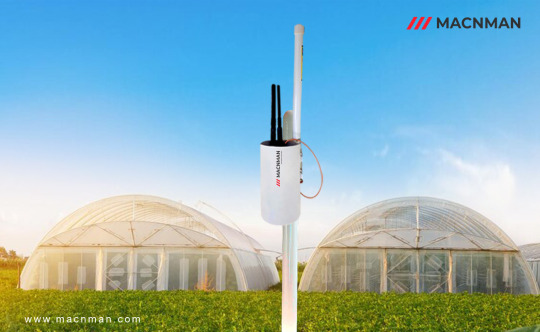
LoRaWAN gateways can be implemented and operated within a private network controlled by a company. For instance, if you need to monitor water levels or pressure at various locations within a reservoir site, gathering data from remotely placed sensors could be a challenging, time-consuming, and costly endeavor. However, by employing LoRaWAN to wirelessly connect these sensors, data collection becomes effortless, and the information can be directly delivered to laptop and mobile applications. To achieve this, the sensor initially wirelessly transmits the data to a LoRaWAN gateway. The gateway subsequently forwards the data from the array of sensors to the cloud and, ultimately, to your application.
In certain situations, particularly in urban areas, LoRaWAN network providers may offer gateway connectivity as a service to multiple end users for a fee.
Once received by a gateway, RF signals are transformed into a format that enables faster data transfer rates. While the maximum data rate of LoRa, at 50Kb/s, suffices for device-to-device or device-to-gateway communication, it could become a bottleneck when attempting to transmit a large volume of messages to the cloud. Hence, a well-designed gateway is essential to facilitate higher data transfer rates from the gateway to the cloud.
Typically, a connection between a gateway and the cloud is established through Ethernet for its speed, but LTE and Wi-Fi are also viable options in outdoor settings.
Subsequently, the data becomes accessible in the cloud via the relevant application. Many sensors are equipped with their own applications that present the data in a user-friendly manner.
0 notes